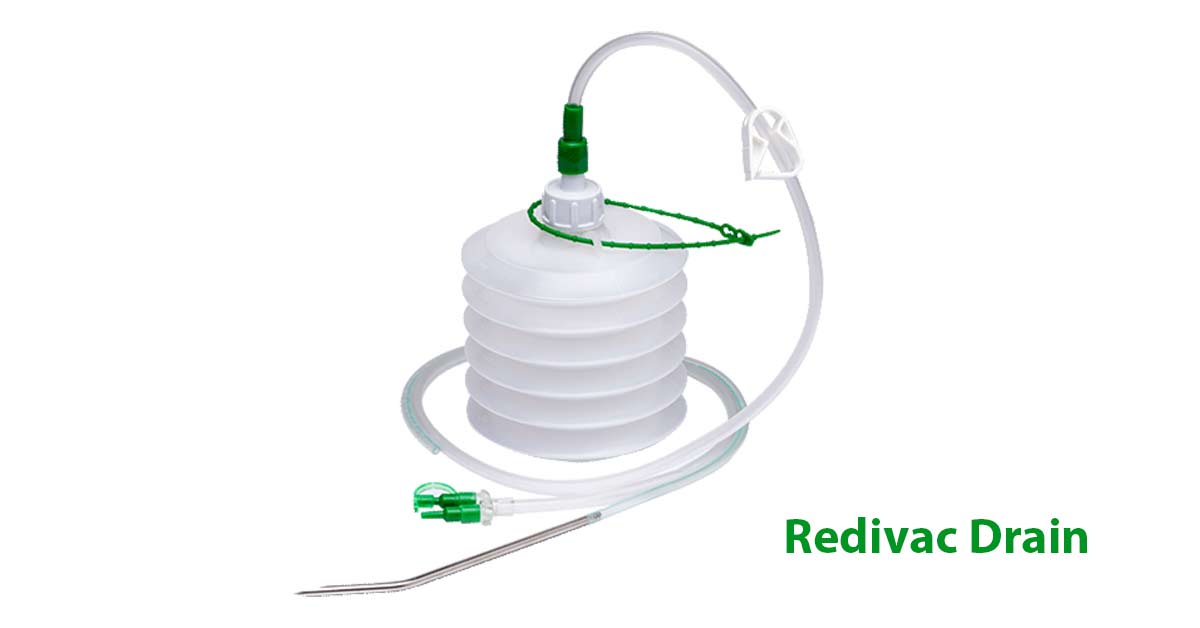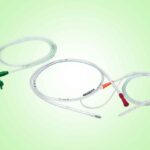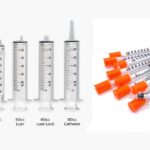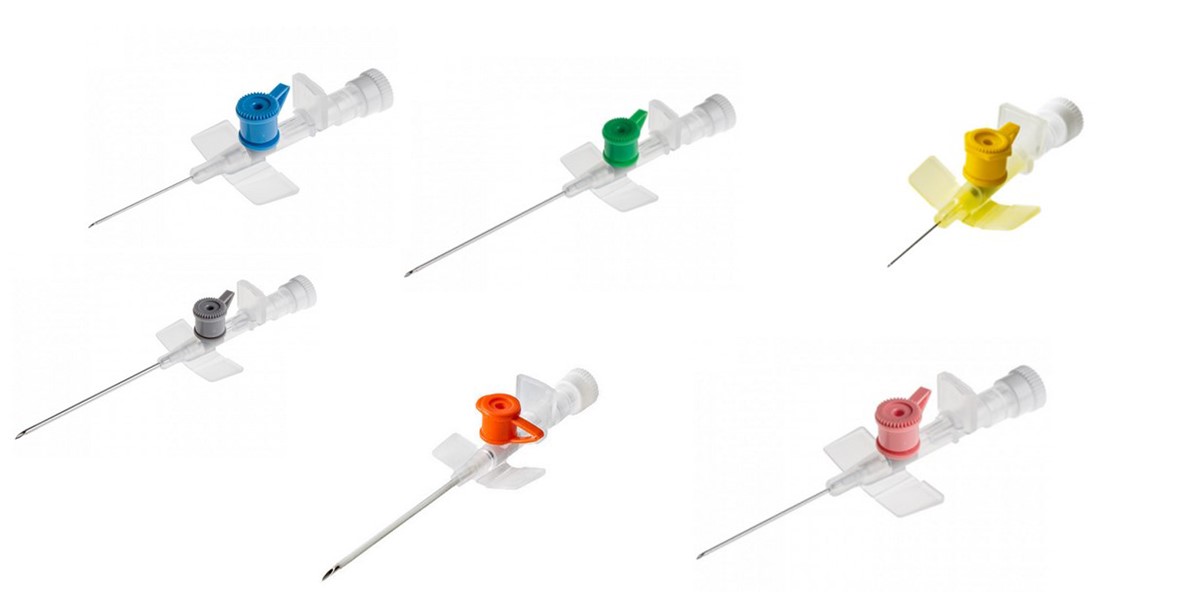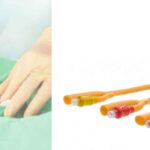Redivac drain, a type of surgical drain, is a thin plastic (PVC) tube placed in the space (cavity) created during the removal of tissue following a surgery. It helps to remove fluid from the body after a surgery. Redivac drain is a high negative pressure drain, and can drain a large volume of fluid.
There are other surgical drain types include Redivac, Jackson-Pratt, Penrose, Pigtail, Bellovac, and Mini-vacuum drain. They are all tubes placed near surgical incisions after an operation to remove blood, pus or other fluids and prevent them from accumulation in the body.
The choice of a type of drain depends on the type of surgery, type of wound, the quantity of drainage, type of patient, and choice of the surgeon.
Although the drain is usually removed by the surgeon before discharging, a patient can go home after the surgery with the redivac drain in certain surgeries. The length of stay of the drain depends on the amount of fluid been drained. Normally, a drain stay in place for 7 to 14 days, but may last longer depending on the amount of fluid and the type of surgery.
Parts of a Redivac Drain
Redivac drain has a length of tubing, that is put in the operation site during surgery and secured in place with one stitch. The tubing is connected to a collection bottle, with a vacuum, and it gently draws fluids out of the wound.
An active drain (vacuum) uses a gentle suction. The green vacuum indicator at the top is a downward position (pressed), when the suction in the bottle is active.
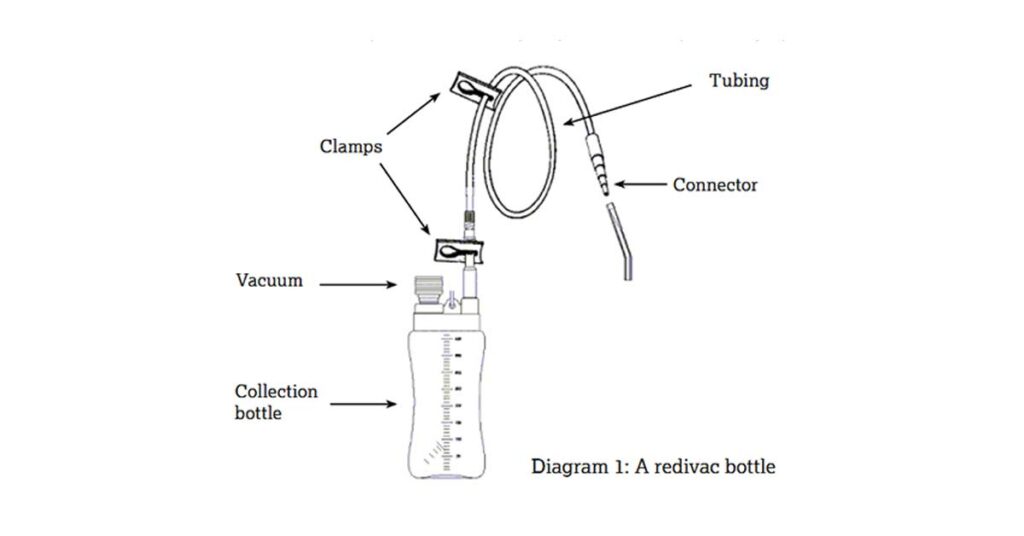
Uses of Redivac Drain
The main use of the redivac drain is to prevent fluid and blood accumulation, after a surgery. The fluid build up (seroma) can cause swelling and discomfort. Redivac drain is used especially in surgeries to the breast, groin, abdomen, leg, underarm (axilla), arm, back, or neck wounds.
The surgeon examine the volume and color of the collected fluid in the bottle (a measurement chart is used to document the fluid output. This is made easier with the printed measuring scale on the bottle). It is also important to measure the fluid level at the same every day. Each line on the bottle is 0 millilitres (mls).
The volume of the fluid decreases as the wound heals, until the drain can be removed from the patient. If the volume of fluid is 50mls or less in a 24 hours interval, it can be removed. Usually, the redivac drain is removed within seven days of the surgery.
During discharging, the patient is provided with a spare drainage bag, gauze, dressings, tape, alcohol wipes, and a clinical waste bag.
How to Change the Redivac Drain
The drain is changed when the bottle is full, when the green indicator has full expanded, meaning there is no more suction, and when the tubing has been disconnected.
The drain is usually removed when the volume reaches 350ml.
- After washing your hands with water and soap, close the clip on the tubing of the used drain
- Close the clip to the bottle you are changing
- Unscrew the luer lock (connector) to disconnect the tube from the bottle.
- Screw on the new bottle tightly, as loss of suction can occur from loose connection.
- Open the clip on the tubing
- Open the clip on the new bottle
When to Seek Medical Help
- Sudden increase in the drainage above 100ml from the previous day.
- The dressing is stained with blood or tissue fluid (red/yellow stain).
- When you exceed body temperature of 37.50C
- If the stitches around the drain are loose or broken or the drain sips out.
- Swollen, red, or painful area of the sin around the drain
- When the drained fluid has a foul smell, or become cloudy, bright red or pus like.
- When the drain is accidentally pulled out.
- The tubing disconnects or the bottle loses its vacuum.
Care of the Redivac Drain
- Both clamps of the drainage tubing should be kept open to ensure drainage
- Maintain the vacuum in the bottle by ensuring the nozzle is compressed
- Change the bottle when the nozzle is raised
- Ensure the drainage tubing is not kinked or bent so that it could work properly
- Maintain the drainage bottle at a level below the operated wound.
References
- https://www.femsurgery.com/wp-content/uploads/2023/04/REDIVACDRAIN.pdf
- https://patientinfolibrary.royalmarsden.nhs.uk/document/download/1054
- https://www.royalberkshire.nhs.uk/media/bx4f00ei/redivac-drain-following-breast-surgery_may22.pdf

